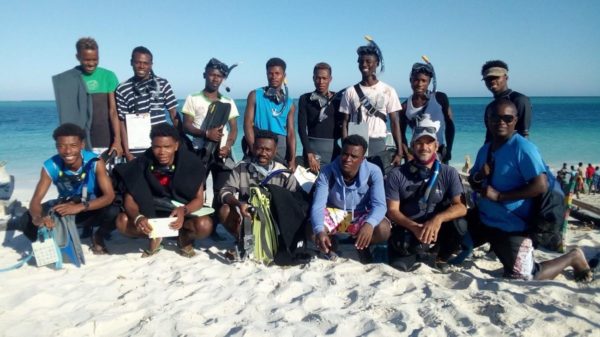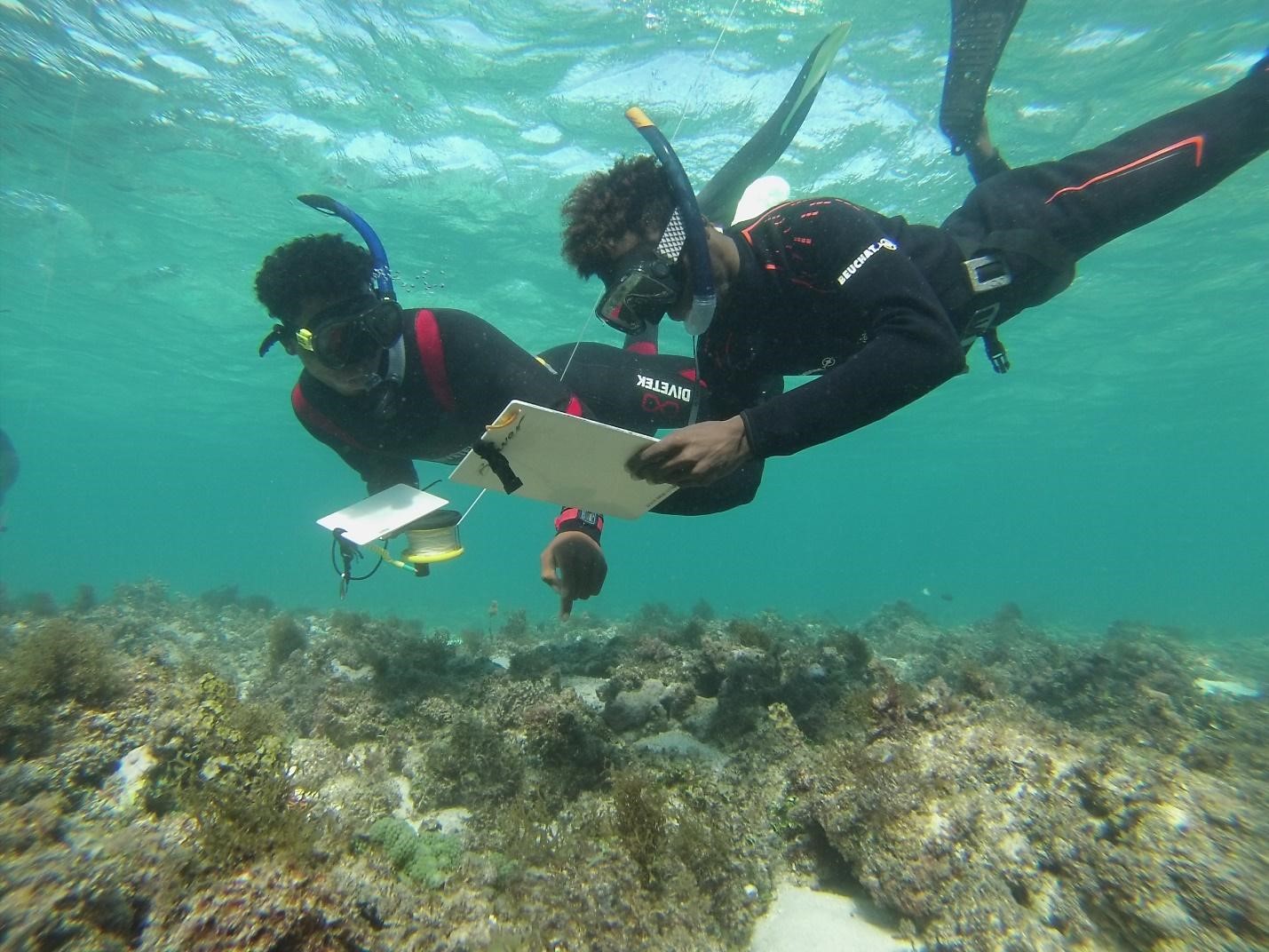Articles illustrate how communities in southwestern Madagascar’s locally managed marine areas have made progress to build their capacity for ecological monitoring and expansion of the marine reserves. These LMMAs are part of the MIHARI Network (ICCA Consortium Member) and are supported by Blue Ventures (ICCA Consortium Member)
First published on 08/17/2022, and last updated on 06/18/2025
For the past two years, communities in southwestern Madagascar have set up diving teams in their Locally Managed Marine Areas (LMMAs) to monitor ecosystems, supported by Blue Ventures (ICCA Consortium Member). Based on the collected data, these communities have created the first seagrass no-take zones and are beginning to see signs of fisheries recovering, helping bolster their livelihoods and food system.
We are pleased to share several articles written by the leaders of these initiatives.
The first article is by Javier del Campo Jimenez titled ‘science and tradition: exchanging knowledge to drive marine conservation in Velondriake.’ In this 2020 article Jabier recalls how the five Vezo community members from Andavadoaka joined forces to form the first local diving ecological monitoring team in the Velondriake locally managed marine area.

Based on the success of this new local diving ecological monitoring team and an increasingly engaged community of fishers, the Velondriake Association has successfully expanded its network of permanent no-take zones (NTZs) by 59% around 160 football fields. The NTZs are areas that are permanently closed to fishers to replenish fish stocks and protect biodiversity. The communities have also put in place a series of surface marker buoys using traditional techniques called ‘jarifa’ to mark out these new zones.
In this article titled ‘science and tradition: expanding Velondriake’s no-take zones through community action’ by Gilde Tahindraza, it is evident that the communities have to overcome many complex challenges to expand their marine reserves. But they have been successful mostly because the overall solution was led by the community and designed to respond to both environmental and socioeconomic needs.
The last one is written by Ange ‘Jacks’ Mahagaga; one of the divers of the first community ecological monitoring team in Madagascar. In this article, we know from Jacks that their Velondriake team has traveled to Manjaboake to pass on the skills of the local ecological monitoring team to its first set of students. The article is titled ‘when the students became the teachers: a new locally-led ecological monitoring team in southwest Madagascar.’
Just a year ago, Jacks and friends in Velondriake; Sylvester, Patin, Ronaldo, and Damas became the first ecological monitoring team in the region composed entirely of community members. Before this, Blue Ventures Expeditions (BVE) had most of the monitoring.
“We’re hoping to lead more training in the central and northern areas of the Manjaboake LMMA, and venture to other LMMAs in Madagascar to share what we’ve learned and also train women as ecological monitors which include a group of 5 ladies that are to be part of the 1st women cohort.”
